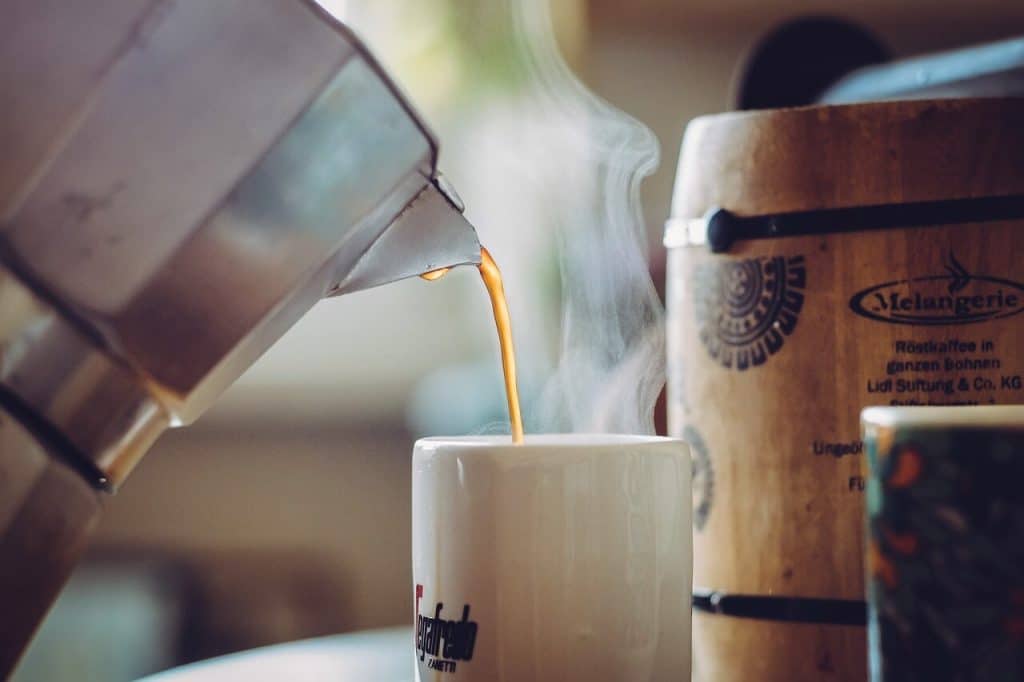Espresso is a coffee brewing method that uses pressure to force hot water under high-pressure. The resulting beverage has a concentrated extract of coffee in a small amount of liquid.
An espresso machine is an appliance used to prepare espresso, which consists of the pressurized forced-steam of finely ground coffee beans. It typically consists of a boiler, boiler tube, steam wand, and portafilter.
Espresso machines can be manual or automatic. Automatic machines have a grouphead or grouphead and portafilter that work together to extract the espresso from the grounds before it passes through the tamped filter into the cup below.
Manual machines are more common in restaurants and bars where baristas often prepare them by hand using an inverted “drip” method which pulls water from the reservoir into
Grind Size for Stovetop Espresso Makers
The size of the grind is an important factor for a good espresso. Grind size is measured in millimeters, and it can be easily adjusted with the help of a scale.
The grind size should be between 19 and 25 millimeters. If you are using a stovetop espresso maker, then you should use a coarse grind. If you are using an automatic machine, then you should use a medium-coarse ground coffee.
Can Stovetop Espresso Makers Make Espresso?
This is a question that has been asked by many coffee lovers. The short answer is yes and no. The long answer is that it depends on how you use your espresso maker.
If you only use the espresso maker to make espresso, then it will not heat the water to a high enough temperature for consistent extraction. However, if you use your stovetop espresso maker as a regular stove-top coffee percolator, then it will heat the water sufficiently.
How to Use A Stovetop Coffee Maker
Espresso is a popular coffee drink that has recently gained in popularity. There are two main ways to make espresso – the stovetop and a traditional machine. If you are interested in making espresso, here are some tips for using your stovetop espresso brew.
1 – Fill the Bottom Chamber with Water
Fill the bottom chamber with cold water. Pre-heat the water, so the coffee doesn’t cook on the stove.
This seems like a good idea if you use the large 6-cup Bialetti, but we found it makes no difference to the taste with the 3-cup maker. Try both ways and do whatever works best for you.
2 – Add Ground Coffee to Filter
Fill the filter halfway with ground coffee. There is some disagreement over how fine the grind should be. We use a finer grind than drip but a bit rougher than an espresso grind. Pack the filter sparingly.
Like with regular espresso, We used our finger to even the grinds and brush away any stray grounds. After loading the coffee into the filter, place it in the bottom chamber. Alternatively, you might load the filter first, then add the ground coffee. Either option is fine.
3 – Secure the Top and Bottom Chambers Together
Twist the top and bottom chambers together until a tight seal is made. If you fail to secure the two chambers fully it can result in a failed brew and potentially having mess to clean up.
4 – Place Coffee Maker onto Stove
Place the stovetop maker onto the stove and turn on the heat. Use A low flame as it will be enough. You could also take it outdoors with you to be used on a campfire.
5 – When Coffee Finishes Brewing, Remove From Heat and Serve
When the coffee has completed the brew cycle and is in the top chamber, turn off the heat, and serve the coffee. Ideally, you would want to keep the lid down during brewing.
6 – Cool Before You Clean
Allow your stovetop espresso maker time to cool before you break it down for cleaning. You don’t want to burn yourself.

